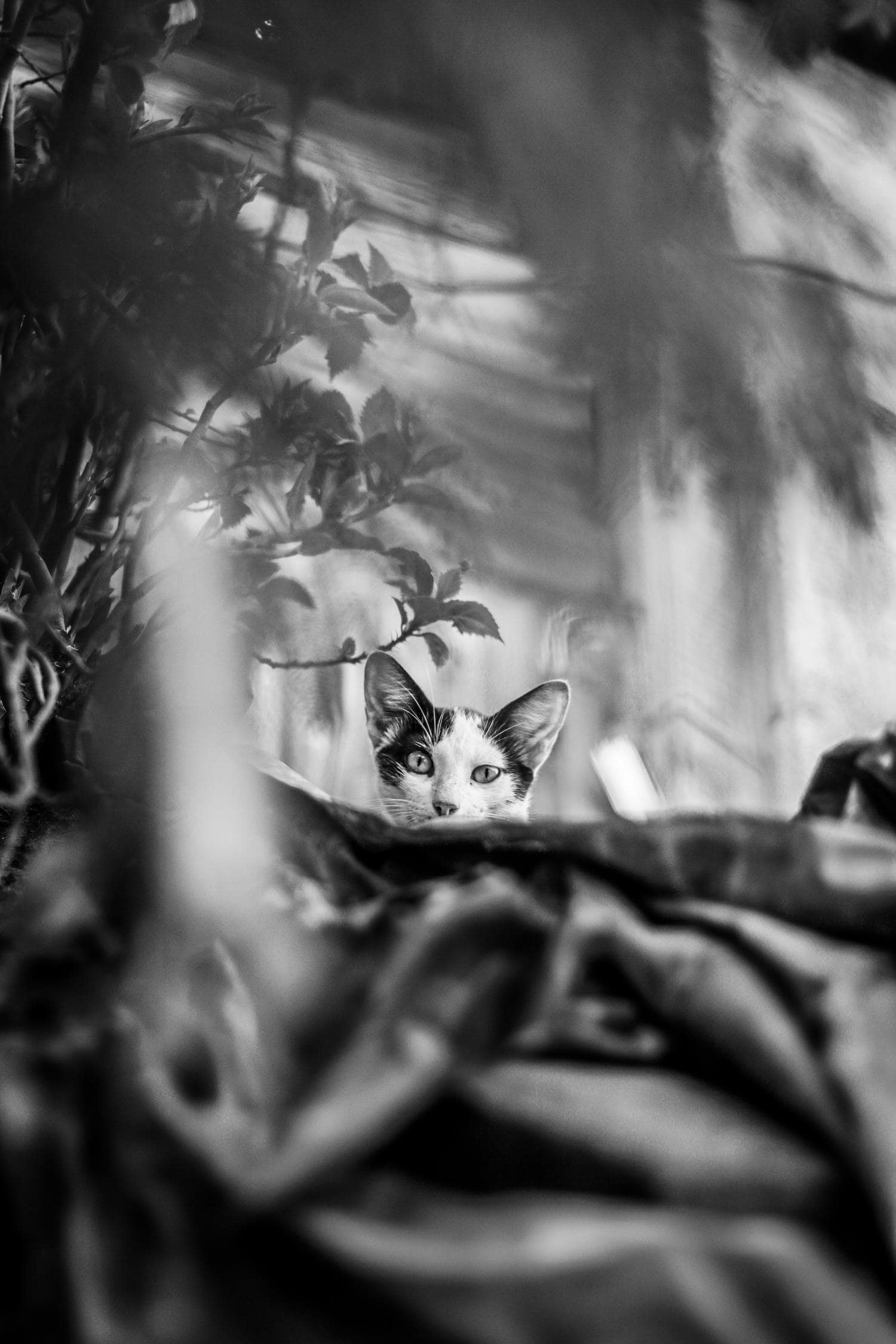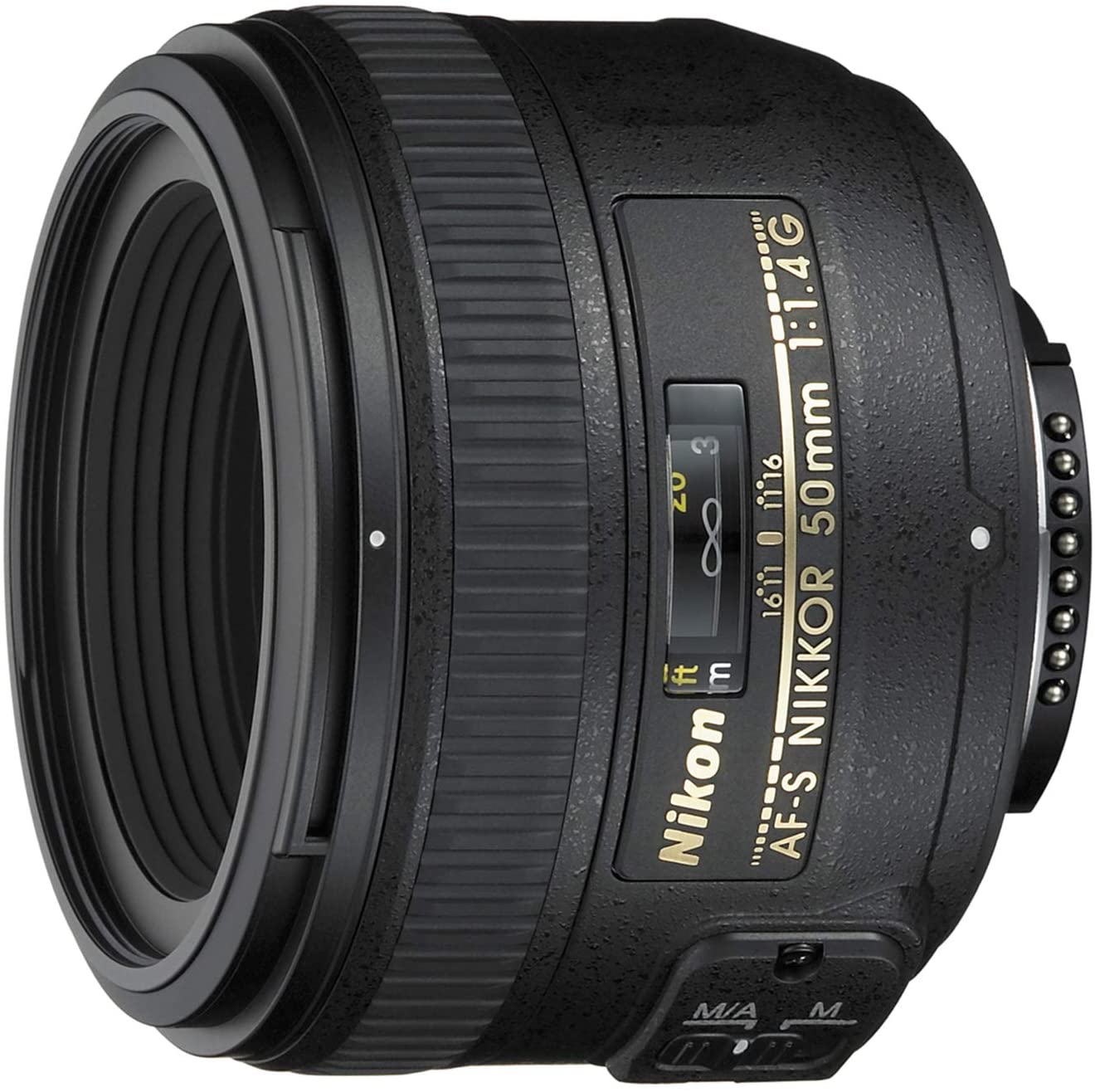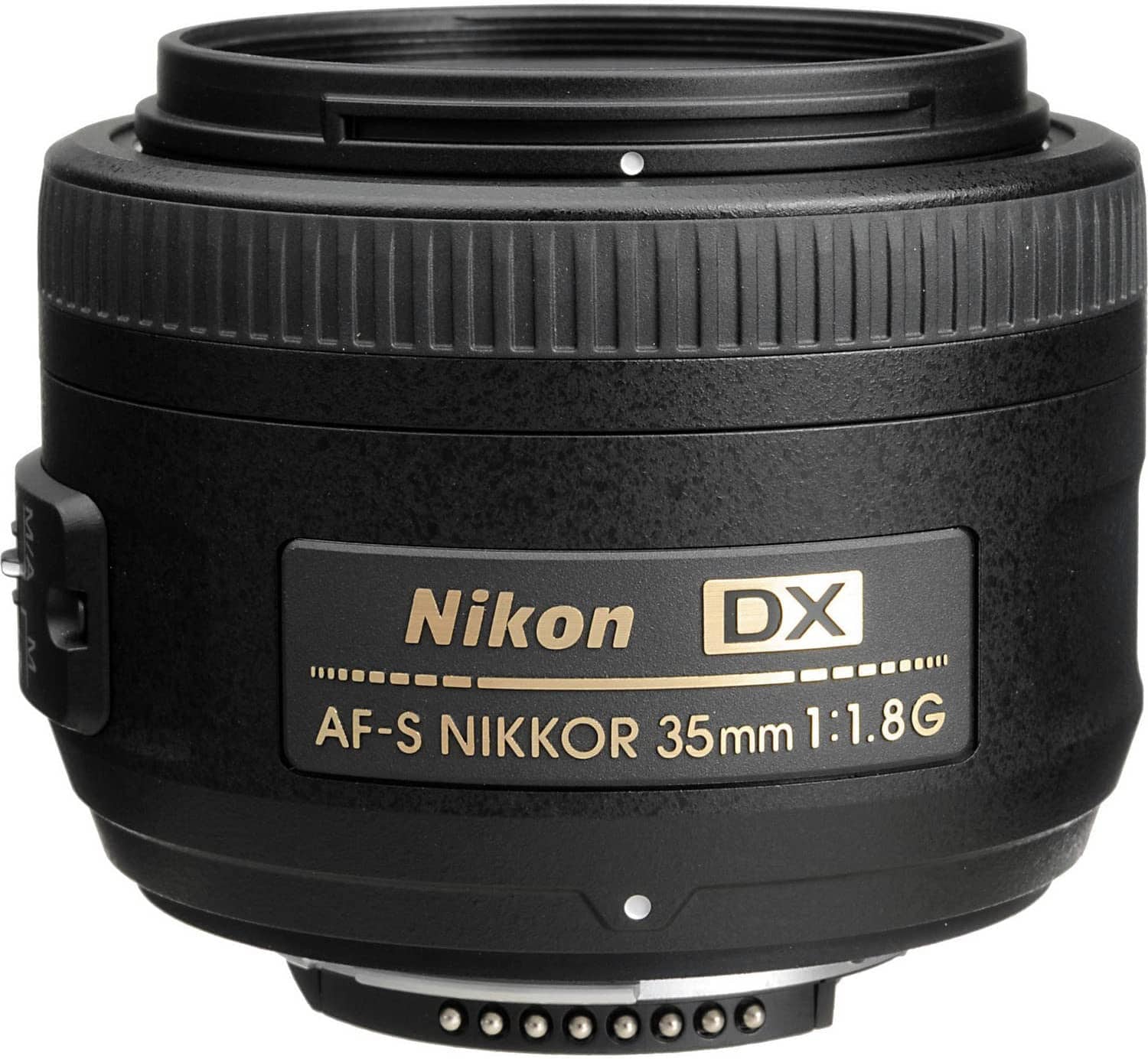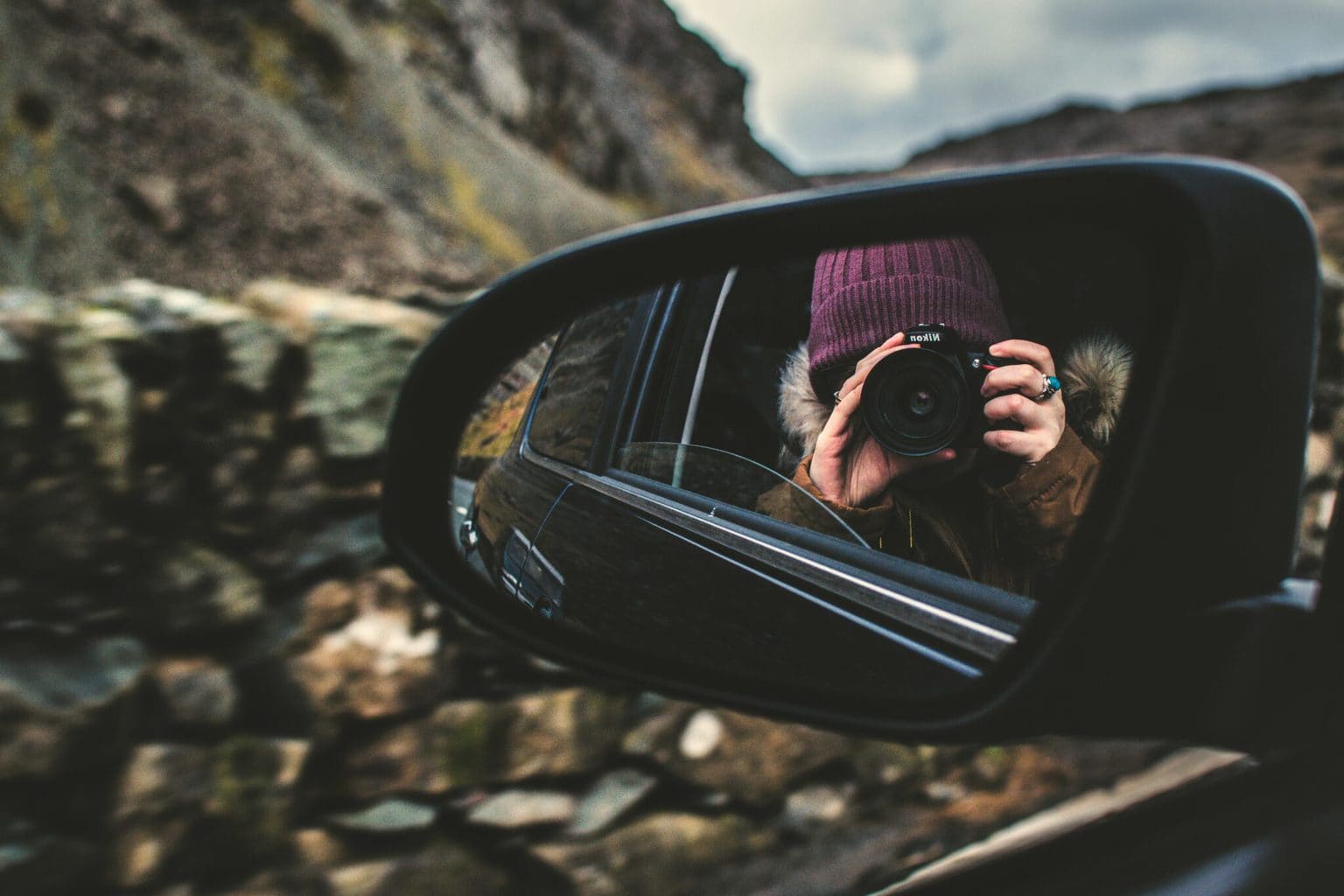The 50mm f/1.4 lens is what Mario dubbed the King of Lenses , and I couldn't agree more with this name. The 50mm f/1.4 is an impressively bright and sharp prime lens , as well as being one of the most versatile optics you'll find.
Through this article I intend to unravel all the characteristics of this wonderful lens, what each of the acronyms and numbers mean, what are its main advantages, its price, alternatives and, ultimately, everything there is to know about this lens. so that at the end of this article there is no mystery left unsolved.

Why is Nikon's 50mm f/1.4 lens so interesting?
- Because it is the one that most resembles human vision in terms of distortions.
- The 50mm focal length is very versatile: ideal for portraits, landscapes, food photography, street photography, everyday photography, etc.
- It is a fixed optic that offers great sharpness.
- It offers an impressive blur or bokeh .
- It is a very bright lens, which allows you to photograph both in low light environments.
- It is very well built.
- It offers excellent value for money.
How not to recommend it, don't you think? ?
With that said, let's focus on the things you should know about this Nikon 50mm f/1.4.
NIKON 50MM F/1.4 MOUNT
If you already have a lens and/or have ever been looking for one for your camera, you may have realized that the type of mount is very important when choosing a lens. If there is no compatibility between one and the other, it is very possible that you cannot directly set the objective, or that it works but you lose functions such as autofocus.
For this reason, it is very important that, before buying any lens, you make sure that it is 100% compatible with your camera. As we know that it is one of the added problems when looking for a lens, we have created a tool to find out the compatibility between all Nikon cameras and all the lenses of the brand itself (Nikkor) . Just follow the steps it tells you (choose your camera model and then the lens you want to check), and you'll instantly know if it's compatible or not and if you maintain autofocus with it.

That being said, here is a brief summary of the types of mounts that exist for the Nikon brand:
- F mount : Nikon's most classic and widespread mount, making it highly compatible with older lens models, since it has been produced since 1969 to the present. F mount lenses are divided into FX and DX format.
- The FX format ones are used on full frame Nikon cameras.
- The DX format ones are for cameras with APS-C format sensors.
- All F-mount lenses can be used on both Full Frame cameras and APS-C cameras, but you should keep in mind that:
- Using a DX lens on a Full Frame camera causes a lot of vignetting at the edges, so it is not recommended (although possible).
- Using an FX lens on an APS-C produces a crop or conversion effect. In this specific case, a 50mm on an APS-C camera ends up becoming a 75mm.
- Nikon 1 mount : This is the mount for the first series of mirrorless cameras, the J series, which is no longer manufactured but for which some lenses still exist.
- Z mount : It is the newest, created for Nikon Z series mirrorless cameras like the Nikon Z50 .
NIKON 50MM APERTURES
If you've been looking around at the Nikon 50mm, you may have noticed that it exists with both an f/1.4 and an f/1.8 aperture. In total there is a light step of difference and quite a few euros between the two.
Surely you have reached the question of whether it is worth spending that extra money for "just" a step of light. Well, when we talk about a light path, we really mean that twice as much light enters, so the seemingly small difference, in low light situations, can be important.
Having a lens that is as bright as possible allows you to work at low ISOs, get good results in low light, and play with blur.
Having said this, I would tell you, if you can afford it, to go for the f/1.4, it is worth having at least one optic of these characteristics. If it's out of your budget, go for the f/1.8, it's still a very good lens, at a more affordable price.


OTHER DIFFERENCES BETWEEN THE NIKON 50MM F/1.4 AND F/1.8
Beyond the most obvious difference that we have already mentioned regarding the maximum aperture of the diaphragm, we must also take into account other aspects when choosing our 50mm.
The price can be a decisive factor depending on how our pocket is at the time we decide to get one. The AF-S 50mm F1.4 G is priced at €519.00and the AF-S 50mm F1.8 G you can get it for €258.89.
Other differences between the two objectives are the weight, the diaphragm sheets or the number of elements:
maximum aperture focus motor Items Weight foils
Minimum Focus DistanceAF-S NIKKOR 50mm f/1.8G f/1.8 SWM 7/6 185g 7 0.45 AF-S Nikkor 50mm F1.4 G f/1.4 SWM 8/7 280g 9 0.45 Differences between Nikon 50mm f/1.4 and f/1.8 BREAKING DOWN ALL THE NOMENCLATURES RELATED TO THE NIKON 50MM:
It's no secret that to crack a target you need to put all your effort into it. There are so many nomenclatures that understanding them all becomes a challenge. As I am perfectly aware of this, I am going to break down the Nikon 50mm for you so that you know exactly what everything means ?

WHAT DOES AF-S MEAN ON NIKON LENSES?:
Indicates that the lens has a built-in focus motor. That implies that they can be used on any compatible Nikon camera body, whether or not it has a focus motor on the camera body.
SWM: SILENT WAVE MOTOR
SWM stands for Silent Wave Motor (SWM) (or silent wave motor). This technology involves high-speed autofocus that is very precise and quiet.
M/A
It is the tab located on the lens's own focus ring and that allows you to switch from automatic to manual immediately.
ACE
AS stands for Aspherical lens elements. This type of lens uses non-spherical surfaces on one or both sides of the glass in order to eliminate certain types of lens aberration.
G-TYPE LENS
It means that it is a lens that does not include an aperture control ring. Adjustment is done electronically from the camera.
50MM FOCAL LENGTH
Why a 50mm and not another focal length? You may be wondering why we praise the versatility of this lens so much in terms of photographic possibilities. Well, the 50mm is more or less in the middle of the focal lengths, in the range that we call "standard".
This, applied to photography, implies that it is the objective that most resembles human vision in terms of distortions, giving us a viewing angle of 46º (in the case at hand, 50mm).
With this angle of vision you can take portraits , food photography , street photography , flowers, nature , landscape ... If you can only get one lens, I think it's the best to cover a huge number of situations with spectacular results.
This has been my exclusive optician for a few years and I have not needed more, so I recommend it to you with knowledge of the facts ? . To see this optic in action, take a look at this gallery.
WHAT HAPPENS IF I ATTACH THE 50MM TO AN APS-C FORMAT CAMERA?
I have already explained it to you throughout the article, this Nikon 50mm is designed for both Full Frame cameras and APS-C cameras, with the difference that it only behaves like a real 50mm in terms of focal length . , on full frame cameras.
In APS-C cameras, what is known as the crop or conversion factor is produced, which implies that the effective focal length translates in this case into a 75mm. If you have an APS-C camera, therefore, it is something very important to consider when choosing a lens.
If you are interested in delving into the subject, you can answer your questions here: Do you know the conversion factor of your SLR camera?
WHAT IF I WANT A 50MM EQUIVALENT FOCAL LENGTH BUT HAVE AN APS-C CAMERA?
It was logical that we arrived at this question. Both sell you the benefits of its viewing angle, its versatility, etc., and then I tell you that in your camera it will probably become a 75mm.
Given this I will tell you, that a 75mm is still a super versatile and brutal lens for portraits ? , but if you want an effective 50mm and you have an APS-C camera, then you need the AF-S DX Nikkor 35mm f/1.8 G for cameras APS-C.

This lens has a 44º angle of view, very close to 50mm in a Full Frame camera, 7 diaphragm plates, 200 grams of weight, a maximum aperture of f/1.8 and a minimum of f/22, it is built with 8 elements in 6 groups (with an aspherical lens). To see the full specifications, click here.
You can get it for €259.00.
NIKON 50MM F/1.4 LENSES
From the Nikon brand (Nikkor is the one he uses for his lenses), I have already told you that you have the option of the Nikon AF-S 50mm F1.4 G for €519.00and the Nikon AF-S 50mm F1.8 G for €258.89.
NIKON COMPATIBLE 50MM F/1.4 LENSES
Nikon is not the only brand that bets on the 50mm, there are others that are also perfectly valid for your Nikon camera, here I leave you with other options outside of the Nikon brand with an f/1.4 aperture:
- Sigma 50mm f/1.4 : A high-end lens with image stabilizer and hypersonic motor, 9 diaphragm blades, weighing 815g, and a 46º angle of view. If you are interested in knowing it in depth, here Do you have the full specs?
NIKON COMPATIBLE 50MM F/1.8 LENSES
- Yongnuo YN 50MM F1.8 : For fairly tight budgets, we have this lens compatible with Nikon F mounts. The price is really suggestive for beginners because the value for money is very interesting. It consists of 7 diaphragm blades, 6 elements in 5 groups, a minimum aperture of f/16, and a 45 cm minimum focusing distance, weighing 120g.
Leave a Reply


